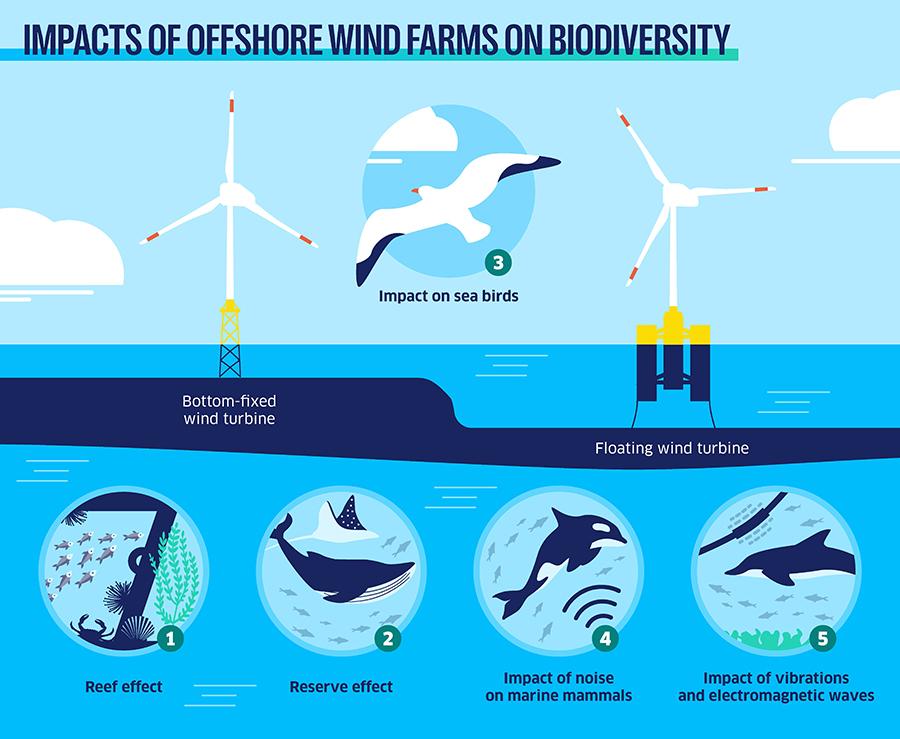1 | The reef effect. Submerged offshore structures attract a population of marine species that inhabit rocky environments (mussels, anemone, sea urchins, crabs, fish, etc.) and their predators. Consequently, the biodiversity of the ecosystem is enhanced. |
2 |
The reserve effect on fish. The reduction or absence of fishing around offshore wind farms creates reservations for species. The resulting proliferation is characterised by a higher concentration of marine species and their predators (birds, marine mammals, fish).
The increase of the biomass and marine biodiversity has a positive effect on the seabed. |
3
|
The impact on sea birds. Migratory birds are most exposed to the risk of collisions, compared with sedentary birds, which become accustomed to wind farms. However, this impact is relatively small, because the birds learn how to avoid the areas around wind farms. |
4
|
The impact on marine mammals. Marine mammals flee the loud noise produced during the construction phase of the foundations of fixed-bottom wind turbines. This disruption is reduced by installing temporary bubble walls.
|
5
|
Vibrations, noise and electromagnetic waves. These forms of disturbance are produced by the cables and have a minor effect, or no effect at all, on marine species. |
ENGIE’s commitment to biodiversity
The leading-edge measures that ENGIE has taken to manage the risks incurred by offshore wind farms include studies and monitoring of the seabed, aerial surveillance and GPS tracking. The Group has signed the UN’s charter of Sustainable Ocean Principles, which requires economic players to commit to the protection of seas and oceans. We have also adopted the “avoid, reduce and offset” principle, which has been at the heart of our Act4nature commitments since 2018. We assess the potential impacts of our activities in order to avoid, then reduce or, as a last resort, offset any residual impacts.
The studies we conduct help us to improve our knowledge of both ecosystems and species (see the video below).
Watch this video to find out more about this experiment:

